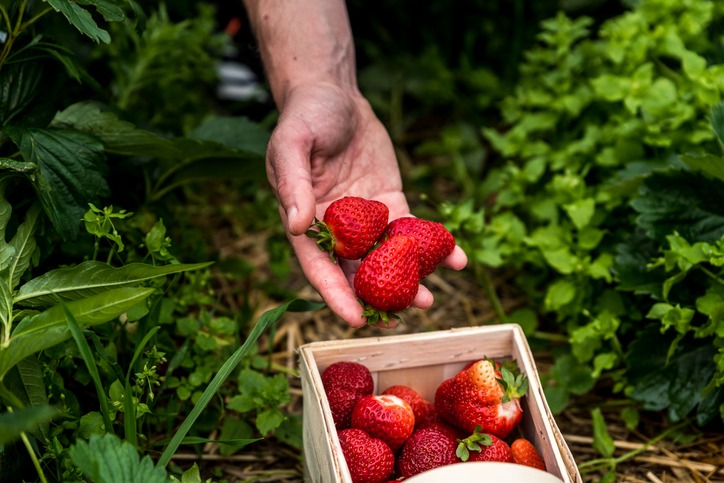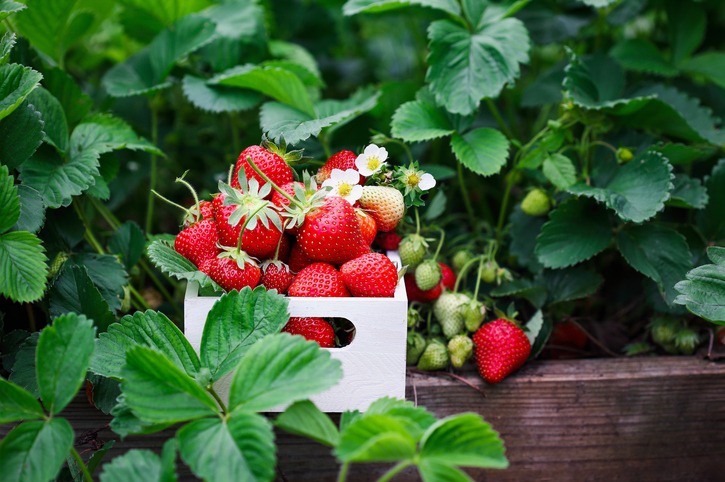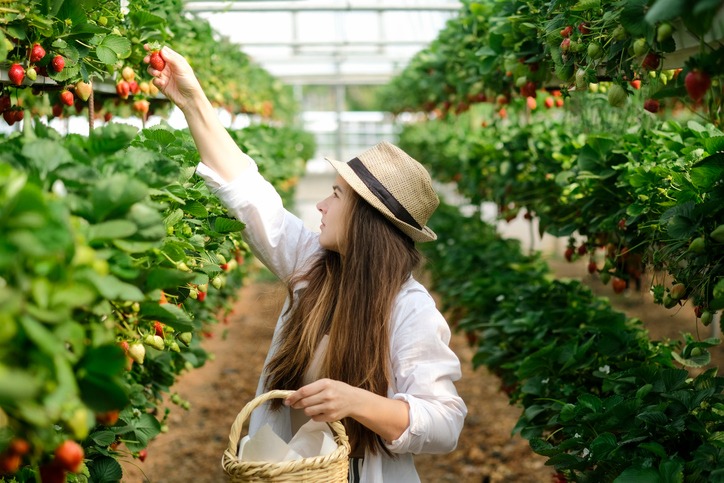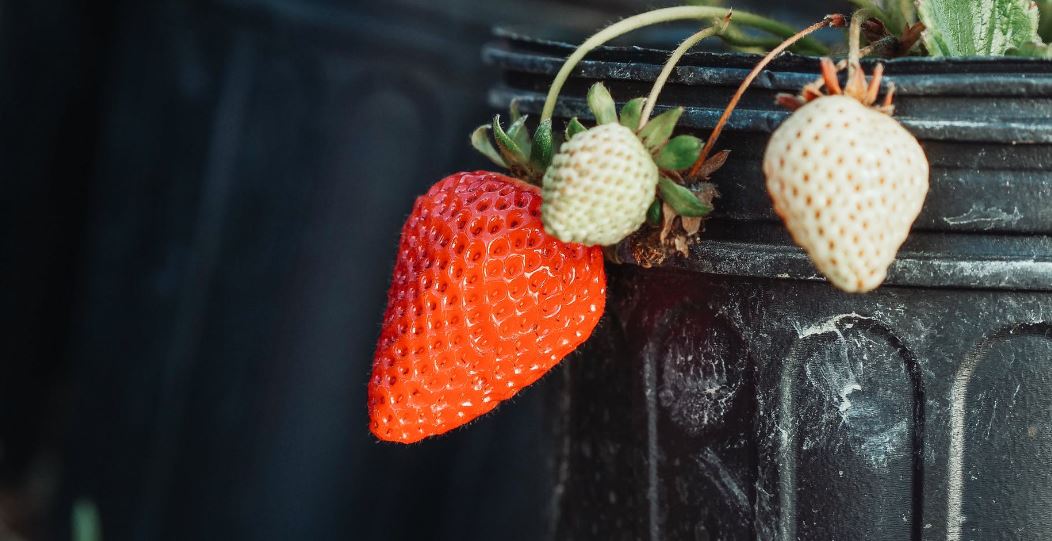Fresh strawberries are pretty awesome. A bright red, ripe, juicy strawberry is one of the most irresistible fruits Mother Nature can offer. Of course, it’s very much appreciated when turned into desserts and jams. Not only are they pretty to look at and delicious to eat, but also their health benefits are spectacular. They are well-suited for home gardens since they are hardy plants that only need moderate effort.
Strawberries are Easy to Grow

If you plan to start growing fruit in your own home, strawberries are among the best choices. It’s among the only fruits suitable for small spaces. You don’t need a lot of ground to grow and harvest strawberries, unlike fruits that grow on trees and need a lot of space for roots to grow. Strawberries can fit within small space constraints or fill huge garden plots. You can grow strawberries in a small pot or a container to be placed on your deck, patio, porch, balcony, or window boxes.
Strawberries can also act as a low ground cover, or you can put them to work as edible edgings for your garden. You may also let them sprawl over the top of the wall. You don’t need to buy fancy or specialized gardening equipment to grow strawberries.
A significant benefit of growing strawberries comes from their perennial nature. You can harvest the fruits for several years after initially planting strawberries with minimal effort after the first year you have planted. Once cared for properly, the strawberry plants usually produce a full quart of strawberries.
The Best-Tasting Strawberries are Freshly Picked

Homegrown strawberries are far more flavorful than the ones you’ll find in the grocery store. Its aroma and juiciness are unmatched by its supermarket counterparts. It’s because the sugar in berries converts to starch soon as it’s picked.
Unlike most fruits, strawberries do not ripen when picked. They start rotting once picked, so ensure to store them in the fridge right away to preserve them if you’re not going to eat them right away, or better yet, freeze them. Keep them dry so they won’t mold.
You Can Avoid Pesticides
Perhaps an even more compelling reason to consider growing strawberries in your own garden is to avoid consuming pesticides. When you buy strawberries in stores and eat them, you inevitably eat pesticides. Even after washing the fruits, store-bought strawberries often have residual pesticides left on them.
According to the Environmental Working Group, commercial strawberries are often ranking poorly on the list of the most contaminated produce items. Growing your own strawberries allows you to know exactly what you are eating.
You Can Gain Many Health Benefits from Fresh Strawberries
Small and tasty, the strawberry is one of the best fruits to eat, especially when it’s homegrown and hand-picked. The heart-shaped silhouette of the fruit itself is the first clue that this fruit is good for the body. Following are some of the health benefits of consuming strawberry fruit:
-
Helps Keep Your Weight Healthy
Since strawberries are high in dietary fiber, they can help normalize bowels, control blood sugar, maintain bowel health, and achieve a healthy weight. Fiber can slow down digestion, which allows you to feel satiated for a long time after eating. One serving of strawberries is high in fiber but low in calories, so it makes for a perfect snack for anyone looking to lose weight.
-
Fights Cancer
Numerous research studies have shown that strawberries can help prevent several types of cancers through their ability to fight inflammation and oxidative stress. It can also inhibit tumor formation. The protective effects of strawberries might be driven by the ellagitannins and ellagic acid it contains.
-
Helps Regulate Blood Sugar
Strawberries are a healthy choice of fruit for people with diabetes or those who wish to avoid high-sugar diets. The fiber in the berries can help regulate blood sugar and keep it stable. It can also slow down glucose digestion and reduce spikes in both insulin and glucose.
-
Good for the Heart
Regularly eating strawberries is good for the heart. Berries are found to improve good cholesterol levels, blood pressure, vascular function, and blood oxidant status. The high concentrate of anthocyanin in strawberries has been found to lower blood pressure, lower bad cholesterol, and make blood vessels more elastic.
-
Helps Repair the Body
Strawberries are packed with vitamin C, which is important for repairing and growing the tissues all over the body. It can help heal wounds and maintain healthy teeth and bones. It also supports the production of collagen, which is beneficial in forming the ligaments, cartilage, tendons, blood vessels, and skin. Consuming strawberries daily would offer improved muscle function and decreased soreness of the muscles after an exercise.
-
Increases Energy
Strawberries contain simple carbohydrates that can quickly turn into energy, making it a great afternoon or pre-workout snack. The fiber content in strawberries can help you feel satiated without feeling bogged down.
-
Prevents Mental Decline
Strawberries can help keep your brain young. Regularly consuming berries can help fight the inevitable mental decline that happens as we age. A study discovered that regular consumption of berries helps delay memory decline by an average of two years. Berries are also shown to reduce brain inflammation and improve cognition.
The Leaves Also Have Medicinal and Nutritional Value
Strawberry leaves boast of nutritional and medicinal value as well. The leaves are rich in bioactive natural resources and contain antioxidants and anti-inflammatory agents.
Strawberry roots and leaves can act as a diuretic. These have long been used against bladder and kidney disorders.
Use and consume strawberry leaves in the form of tea. Infuse the leaves and the fruit in boiling water. Eat it with strawberry salad and keep the leaves intact. Soak the strawberries in balsamic vinegar and enjoy. Strawberry leaves can also be added to salads, salsa, soup, and cheese.
How to Grow Strawberries at Home

Choosing the Right Type of Strawberries
The first thing you want to do to grow strawberries at home is choosing the type of strawberries you want to grow. Everbearing strawberries are suitable for long-term plans as they can be harvested anytime during their growing season. Everbearing strawberries are not the high-quality ones that we all love and prefer, but they are a good choice if you want to harvest the fruit in summers and autumn.
On the other hand, June-bearing strawberries are the best choice if you want to harvest a large number of strawberries in a short period. This type of strawberry crop is ready in mid-June to early July.
Another option for you to choose instead of everbearing strawberries is day-neutral ones. This type of strawberry also bears fruit throughout the season, which usually lasts from June to late August.
You can also consider planting alpine strawberries if you have a small garden. They have smaller plants than other strawberries and are a lot easier to grow.
Steps to Start Planting
- First and foremost, you should choose a suitable container to plant the seeds and pot them. The best option is to utilize a hanging woven basket and line it with an aerated polythene piece. Lay the polythene sheet to cover the whole perimeter of the basket.
- Poke some holes in the lining from the bottom to drain the water from the plants.
- A pot or a hanging basket of 14-15 inches (35 cm) can easily hold four strawberry plants.
- Now is the time to start potting your plant. Use old paper to lessen the mess and put the all-purpose potting mix in the bottom of the basket. It would be best if you only filled half of the basket so that the roots have some breathing space.
- A pro tip is to mix a little bit of soil-based compost in the potting mix (equal parts).
- Now, you have to add fertilizers to the soil (to know how to make fertilizers at home, click here). You can also add some slow-release feed granules to the soil for some additional nourishment.
- To start planting the fruit, you have to take your strawberry plants and immerse them in water for half an hour. You have to do this way before planting the strawberries so that they are ready when you have to use them.
- Now, wheedle the plant roots apart to separate them in the soil.
- Start planting your strawberry plants along the edge of the basket or pot with about 10 inches (25 cm.) distance in between.
- Ensure that the top part of the root balls of strawberries stays about an inch inside the basket so that your plants have enough space to breathe in the soil and compost mix.
Homegrown is the Best
What is better than the store-bought sweet goodness of a pack of strawberries? The answer is homegrown strawberries! Yes, homegrown fruits are the best. You can be sure of the quality of soil and the fertilizers used while having an ample supply of strawberries all through the harvest season.



